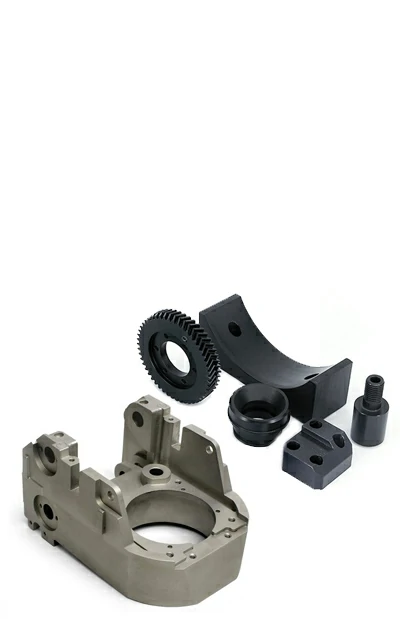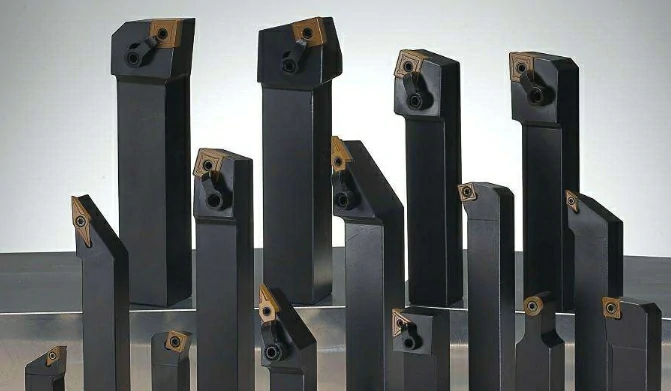
CNC Swiss precision machining—often simply called Swiss machining—is a cutting-edge manufacturing technique known for its exceptional precision and versatility. If you’ve ever wondered how tiny, intricate components are made with such accuracy, Swiss machining is likely the answer. Let’s dive into what makes this process stand out and why it’s so valuable in industries requiring high-quality parts.
What is CNC Swiss Precision Machining?
At its core, CNC Swiss machining is a highly specialized form of machining that excels in producing small, complex parts with tight tolerances and exceptional surface finishes. The “Swiss” in the name refers to the origin of this technology, which originated in Switzerland. It’s particularly renowned for its ability to produce small, high-precision parts with exceptional detail.
Unlike conventional CNC lathes, Swiss-type machines have a unique design that allows for simultaneous turning and milling operations, often referred to as “sliding headstock” or “capstan” lathes. This setup allows for faster production rates and greater flexibility in handling small, long, and thin workpieces with multiple features.
How Does It Work?
The process starts with a blank piece of material, usually metal like stainless steel, aluminum, or brass, loaded into the machine’s chuck. The chuck rotates the workpiece while the machine’s tool holders, guided by computer programs, move in precise patterns to cut, shape, and drill the material.
The key advantage lies in the sliding headstock, which allows the cutting tools to approach the workpiece from multiple angles simultaneously. This eliminates the need for multiple setups, significantly reducing production time and enhancing accuracy. Plus, the use of guide bushes or collets keeps the workpiece firmly centered, minimizing vibration and ensuring consistent results.
Here’s a basic rundown of how it works:
- Material Feeding: The raw material (usually a metal rod) is fed into the machine from a spool.
- Guide Bushing: This supports the material as it’s machined, which helps to prevent deflection and maintain accuracy.
- Turning: The material is turned against a cutting tool. The machine’s unique design allows for both turning and milling operations to be done simultaneously.
- Cutting: As the material rotates, the cutting tools perform precise operations to shape the part.

Why Choose CNC Swiss Precision Machining?
So, what makes cnc swiss precision machining a go-to option for many manufacturers? Here are some of its key benefits:
1. Exceptional Precision
Swiss lathes can achieve extremely tight tolerances, often in the range of ±0.0001 inches. This level of precision is crucial for parts used in industries like aerospace, medical devices, and electronics. The Swiss lathe’s design minimizes vibrations and tool deflection, resulting in consistently high-quality outputs.
2. High Production Efficiency
Swiss machines are designed for efficiency. They can produce parts quickly while maintaining high precision. The automatic feeding of material and the ability to run multiple operations simultaneously mean that you can achieve high production rates without sacrificing quality. This makes Swiss machining a cost-effective option for high-volume production.
3. Versatility in Materials
Swiss machining can handle a wide range of materials, from metals like stainless steel and aluminum to various plastics. This versatility allows manufacturers to use the same machine for different types of parts, adapting quickly to different material requirements and project specifications.
4. Complex Geometries
Swiss machines are particularly adept at producing complex geometries and intricate details. The combination of precise cutting tools and advanced CNC programming enables the creation of parts with multiple features and fine details that would be challenging to achieve with other machining methods.
5. Reduced Waste
The efficiency of Swiss machining not only speeds up production but also reduces material waste. The precise cutting and efficient material handling mean that less material is discarded during the manufacturing process. This can lead to lower production costs and a more sustainable manufacturing approach.
6. Consistent Quality
The automation and precision of Swiss machining ensure consistent quality across all produced parts. Once the machine is set up and programmed, it can produce thousands of identical parts with minimal variation, which is crucial for maintaining high standards in industries where reliability and consistency are essential.
7. Enhanced Surface Finish
Swiss machining typically results in a superior surface finish compared to other machining methods. The process minimizes tool marks and imperfections, resulting in parts that often require less post-machining work and have a smoother, more polished appearance.
8. Time-Saving Setup
The setup time for Swiss machines can be relatively short compared to other machining methods. The ability to quickly adjust and reprogram the CNC system means that changes to designs or production runs can be made efficiently, helping to meet tight deadlines.

Applications of CNC Swiss Precision Machining
Swiss machining is widely used in industries where precision and reliability are critical. Some common applications include:
- Medical Devices: Surgical instruments, implants, and components requiring strict sterility and precision.
- Automotive: Fuel injectors, transmission parts, and other critical engine components.
- Electronics: Connectors, pins, and other precision parts for circuit boards and electronic devices.
- Aerospace: Fasteners, valves, and other components where weight reduction and durability are crucial.
- Watchmaking and Jewelry: Tiny gears, cases, and decorative elements for luxury timepieces and jewelry.
Advantages and Disadvantages of CNC Swiss Precision Machining
| Advantages | Disadvantages |
|---|---|
| Achieves tight tolerances and intricate designs. | Expensive to purchase and set up. |
| Ideal for producing small, complex components. | Requires skilled programming and setup. |
| Reduces downtime and increases efficiency. | Best suited for small diameters and may not be ideal for larger parts. |
| Often requires minimal additional finishing. | Not all materials are suitable for Swiss machining. |
| Well-suited for high-volume production runs. | Ongoing maintenance can be costly. |
When to Use Swiss Machhining
Swiss machining is ideal when you need to produce small, complex parts with high precision. Use Swiss machining when:
- You require parts with extremely tight dimensional tolerances.
- The parts have intricate designs or small features that are difficult to machine with other methods.
- You need to manufacture large quantities of small parts efficiently.
- You need high-quality surface finishes with minimal additional processing.
- The parts are small and have a small diameter, which Swiss machines are specifically designed to handle effectively.
In these scenarios, Swiss machining offers exceptional precision and efficiency.
The Future of Swiss Machining
As technology advances, Swiss machining continues to evolve. Modern CNC Swiss machines come equipped with advanced features like multi-axis capabilities and automated tooling systems, further enhancing their versatility and precision.
In the future, we can expect even more innovations in Swiss machining, driven by advancements in materials science, machine control technology, and automation. These developments will likely expand the range of applications and improve efficiency even further.
Ready to Elevate Your Manufacturing?
When it comes to CNC machining services, partnering with the right expert can make all the difference. At BOYI, we combine cutting-edge technology with unparalleled expertise to deliver precision-engineered solutions tailored to your needs. Our commitment to quality, innovation, and customer satisfaction ensures that every part we produce meets the highest standards.
If you have any specific questions about CNC Swiss machining or need advice on a particular project, feel free to ask!

Ready for Your Project?
Try BOYI TECHNOLOGY Now!
Upload your 3D models or 2D drawings to get one on one support
FAQ
CNC machining refers to automated machine tools controlled by computers. Swiss CNC is a specific type of CNC lathe that excels in producing small, complex parts with high precision due to its sliding headstock and guide bushing.
A CNC Swiss operator runs Swiss CNC machines, setting up, monitoring, and adjusting the machine to produce precise, small parts. They ensure quality and handle any issues that arise during the process.
The biggest disadvantage of using CNC machining is the high initial cost of the equipment and setup. CNC machines are expensive to purchase and maintain, and programming them requires specialized skills.
Catalog: CNC Machining Guide

This article was written by engineers from the BOYI team. Fuquan Chen is a professional engineer and technical expert with 20 years of experience in rapid prototyping, mold manufacturing, and plastic injection molding.






